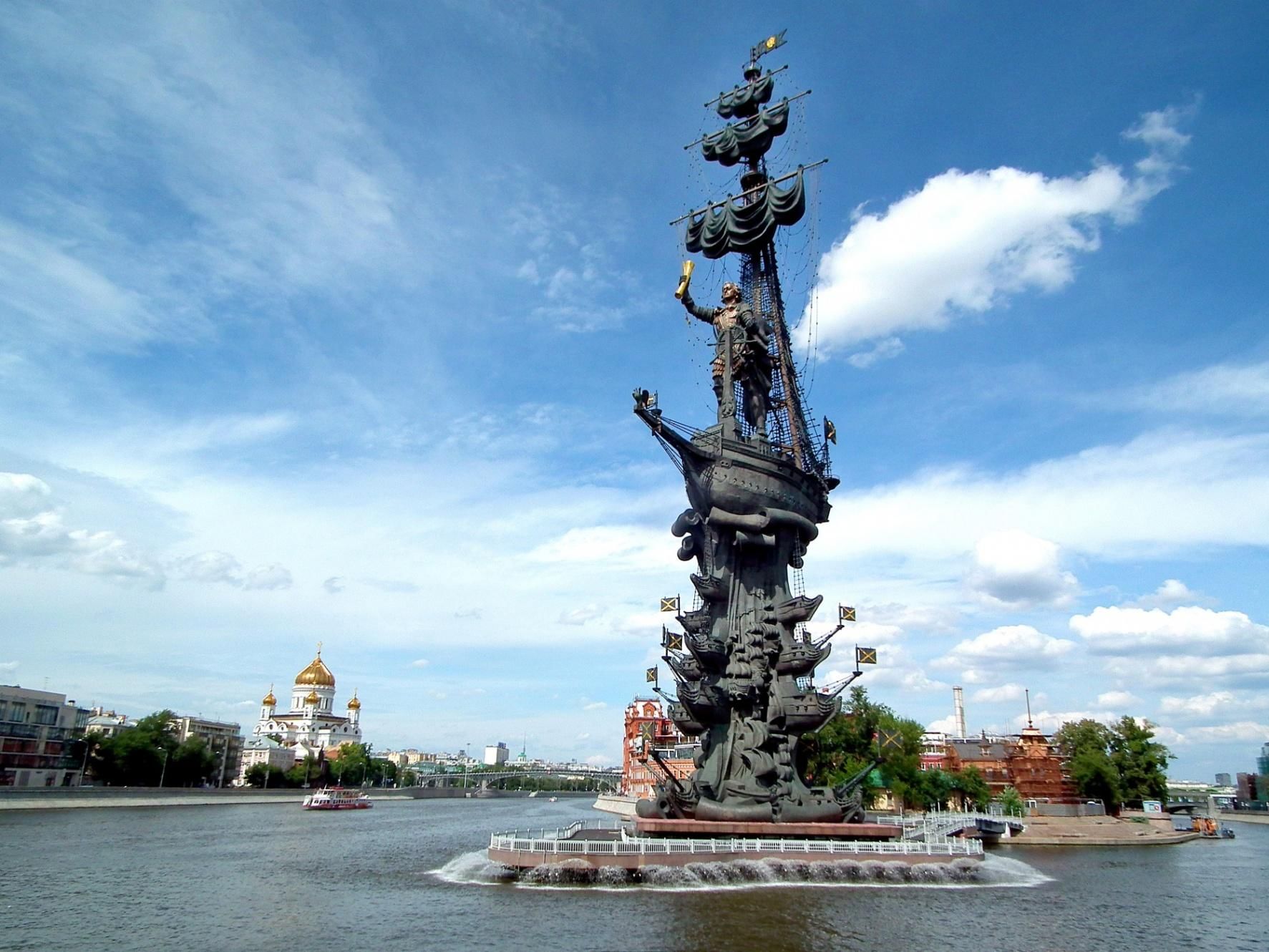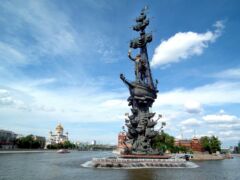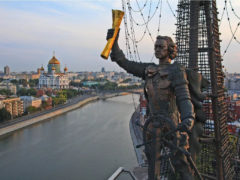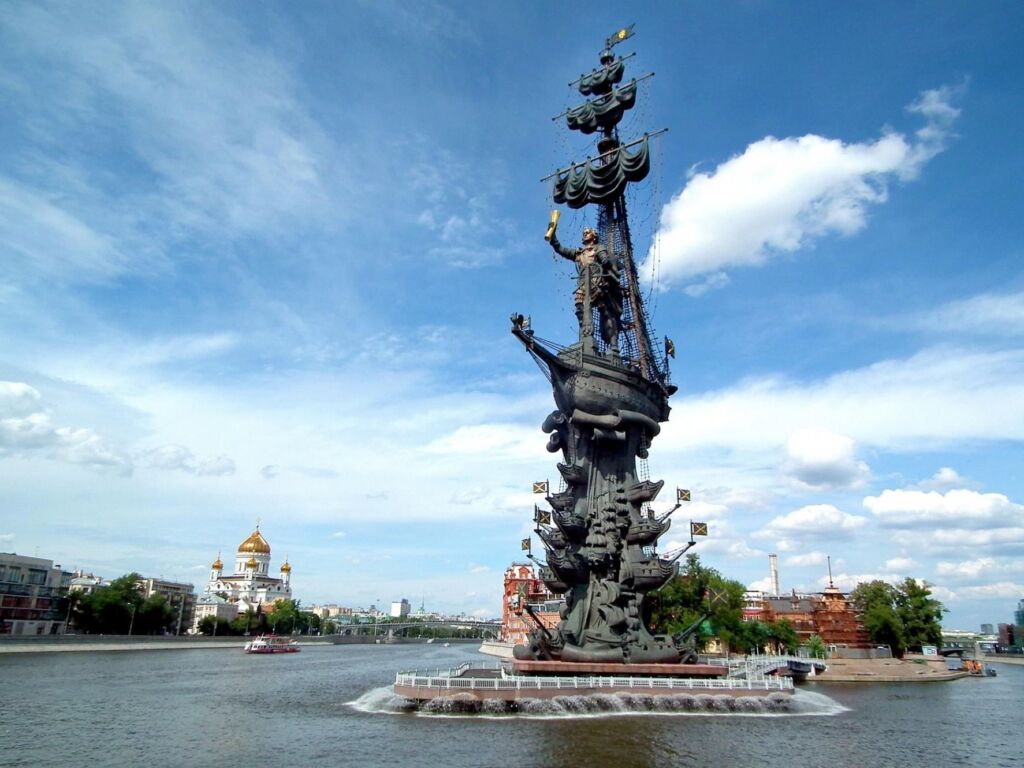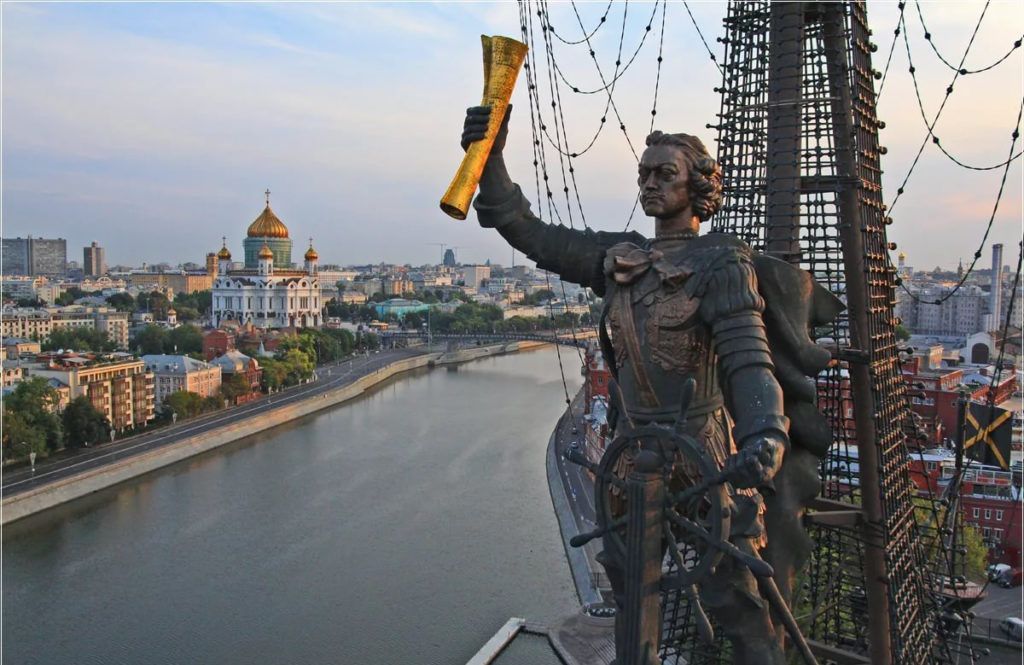free
Country:
Region:
Other names:
Value:
Visit duration:
Price (adult):
free
Why Top:
Монументальная фигура у воды с многоярусным постаментом и морской символикой завершает перспективу площади.
Description:
The monumental composition was conceived as a multi-tiered image of a maritime power with a rostral column, a sailing ship, and the reformer at the helm. The structure uses stainless steel as the load-bearing frame with mounted bronze and copper elements, while the copper sails have an internal metal framework to reduce weight. It stands on an artificial island at the split of the Moskva River and the Vodootvodny Canal, framed by fountains that create the effect of a ship cutting through water. The ceremonial opening took place on September 5, 1997, during the city’s 850th anniversary celebrations with the participation of President Boris Yeltsin and Mayor Yuri Luzhkov. The total height is about 98 meters, with the emperor’s figure about 18 meters tall, making it one of the tallest monuments in the country. Engineering complexity included wind-tunnel tests of a scale model and a pile-supported reinforced concrete foundation. Today the composition serves as a visual landmark at a river bend and a focal point for pedestrian routes along the embankments and the arts park.
The monument to Peter I by Zurab Tsereteli was erected in 1997 by order of the Moscow Government. The official name is “In Commemoration of the 300th Anniversary of the Russian Navy”.
The monument is located on an artificial island, built at the junction of the Moscow River and the Vodootvodny Canal. This is one of the tallest monuments in Russia. The total height of the monument is 98 meters, the height of the figure of Peter is 18 m.
The composition has a complex and unique engineering device. A column on a granite base holds a ship in which the figure of Peter the Great is located. The supporting structures of the monument are made of stainless steel, and bronze facing elements are fixed to them.
Peter I holds a gilded scroll in his hand. St. Andrew’s flags are mounted on bearings and serve as weather vanes, the crosses on them are also gilded. Fountains are built into the reinforced concrete base, creating the effect of a moving ship cutting through the waves.
Inside the monument there is a staircase designed to monitor the condition of the monument. The entrance hatch is located in the head of the figure of Peter.
Памятник Петру I работы Зураба Церетели был воздвигнут в 1997 году по заказу Правительства Москвы. Официальное название — «В ознаменование 300-летия российского флота».
Памятник находится на искусственном острове, насыпанном у разделения Москвы-реки и Водоотводного канала. Это один из самых высоких памятников в России. Общая высота памятника — 98 метров, высота фигуры Петра — 18 м.
Композиция имеет сложное и уникальное инженерное устройство. Столб на гранитном основании держит корабль, в котором располагается фигура Петра Великого. Несущие конструкции памятника изготовлены из нержавеющей стали, на них закреплены облицовочные элементы из бронзы.
В руке Пётр I держит позолоченный свиток. Андреевские флаги установлены на подшипниках и служат флюгерами, кресты на них также позолочены. В железобетонное основание встроены фонтаны, которые создают эффект движущегося корабля, рассекающего волны.
Внутри памятника есть лестница, предусмотренная для наблюдения за состоянием монумента. Входной люк расположен в голове фигуры Петра.
Facts:
The project’s author and chief sculptor is Zurab Tsereteli, materials include stainless steel, bronze, and copper, it is among the tallest monuments in Russia, mounted on an artificial island with surrounding fountains and an internal maintenance staircase.
Significance:
National and regional cultural and urban-planning value as a skyline dominanta and a symbol of late 20th century urban transformation.
Categories:
Why visit:
Interesting:
Fitness level:
Best visit time:
Do:
panorama viewing
photo and video shooting
river cruising
riverside strolling
Access:
Roads:
Facilities:
Open:
Emergency:
112
Info:
Safety:
Generally safe during active hours, take care near the water’s edge and winter ice, mind pickpockets on crowded days.
Clothing:
Seasonal citywear with comfortable shoes, windproof jacket in shoulder seasons, warm hat and gloves in winter.
Climate:
Temperate continental with cold winters and warm summers.
Tips:
Visit on a weekday evening for soft light and fewer crowds, bring a 35–85 mm lens for flattering angles, best viewpoints are by the Muzeon park and along the Prechistenskaya Embankment.
Connection:
Stable urban 4G and some 5G coverage, open Wi‑Fi in nearby public areas and museums.
- Rising prices for travel in Germany in 2025: reasons, scale and consequences
- Haiti, unfiltered: how to travel smart and fall in love with the country
- Bacalao – salted cod as a symbol of travel and the taste of Portugal
- Bali
- The Most Dangerous Tourist Destinations for Women: Where to Travel with Extreme Caution
- Brest (Belarus)
- Kostroma (Russia)
- Tourism in Nigeria: Challenges, Growth, and the Path to Regional Leadership
- Pirate places of the world: where to travel for seafaring legends
- Uzbekistan
- Apple in tourism: how the brand became a travel attraction
- Sanin Coast Road Trip
- Norway’s Atlantic Road scenic drive
- Namaqualand Flower Route
- Moab
- Greece
- About
- Haruto Takahashi Found Pirate Treasure in Madagascar
- Lithuania
- Los Angeles











